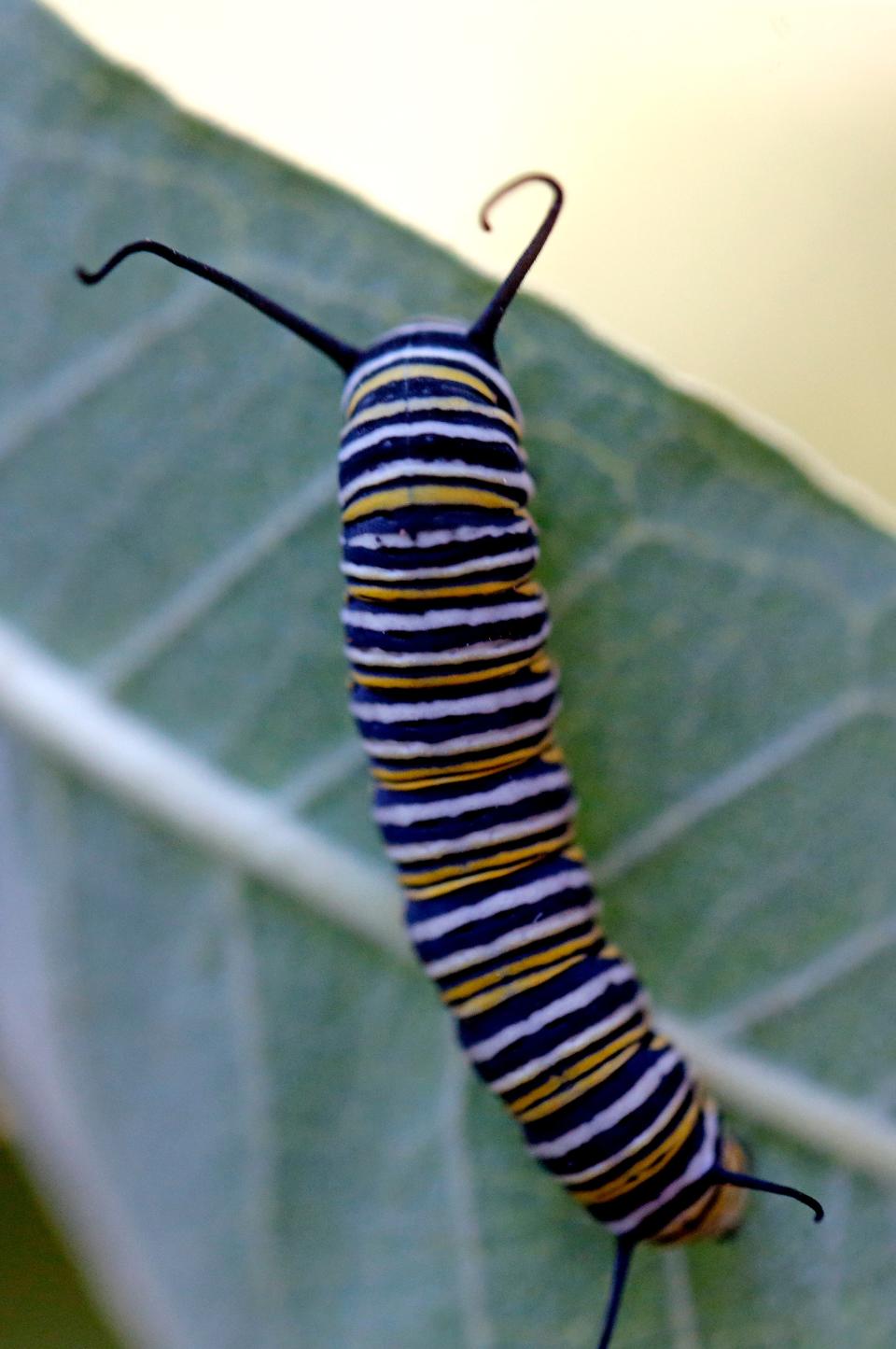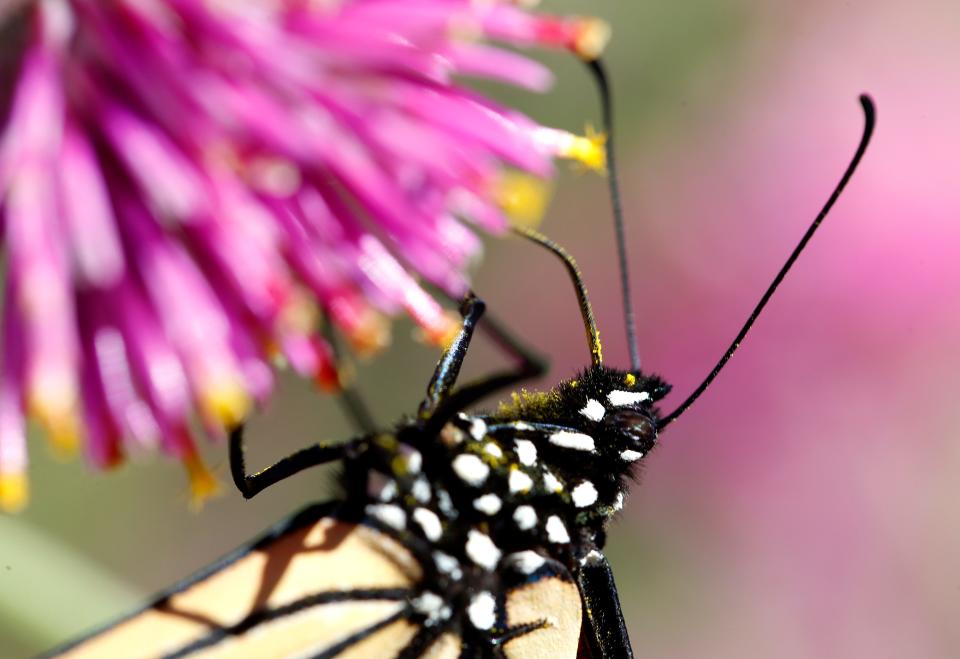Endangered monarch butterflies migrate through Oklahoma. How you can help the species.
Oklahomans may catch a glimpse of the beautiful orange, black and white butterfly as it makes its way through the state and down south for the winter.
In one of the longest and most unique migrations in the world, eastern monarch butterflies start their journey from Canada through Oklahoma then to Mexico. This multigenerational, multinational migration covers some 3,000 miles and Oklahoma serves as a central stopping point.
The butterflies travel by the thousands throughout the state and can be seen from the end of September until the middle of October. What is already a long and difficult journey has been intensified by climate change and habitat loss. In July, the International Union for Conservation of Nature declared the monarch butterfly endangered.
Numbers of monarchs have been in steady decline over the past decade. However, there has been a slight upward trend in the amount of monarchs in the past year. This data correlates with the increase of community support and pollinator gardens, said Stephanie Jordan, the pollinator outreach coordinator at the Oklahoma Nature Conservancy.
More:Monarchs and other native species need us. Here's how we can help.
Oklahoma has a statewide campaign to protect these butterflies. Okies for Monarchs is made up of more than 45 organizations and residents across the state that work to ensure the preservation of the butterflies. The group created the Statewide Monarch Conservation Plan, which lays out a thorough review of the challenges and goals of monarch migrations.
"Oklahoma is an agricultural state," Jordan said. "Roundup (herbicide) became very popular in the '90s and has contributed to wide habitat loss. If people can hold off on spraying with pesticides and herbicides until after their fall migration, it would really help the monarchs."
The best thing you can do is plant native plant species and milkweed, Jordan said.

OKC Zoo tags monarch butterflies as they migrate through Oklahoma
The Oklahoma City Zoo is a member of Okies for Monarchs and aids in conservation efforts by tagging the butterflies through a program by Monarch Watch. The zoo has participated in the program for 25 years and has tagged over 3,000 butterflies.
Emily Geest, postdoctoral fellow of conservation and science at the zoo, works with a team of volunteers who help her catch and tag the monarchs.
"Every summer, we order little adhesive tags that stick to their wings with a unique code on each one," Geest said. "They are butterfly safe so it doesn't impair their ability to fly. We enter the code into a database and in spring, people try to find these tags and turn them in. Since we began this program, we have had at least one butterfly be recovered in Mexico each year."
Monarchs are important to the ecosystem because they are pollinators and a great indicator species. They let ecologists know how the environment is doing. They also provide food to birds and other small mammals, explained Geest.

After biking over 10,000 miles along the migratory path of the monarchs, Sara Dykman has become a voice for the butterflies. She wrote a book about her experience and tours the country advocating for the wellbeing of the monarchs.
She recently spoke at Myriad Botanical Gardens in downtown Oklahoma City, an ideal location to spot monarchs due to the number of native plants and milkweed species.
"The monarchs can't call city council or municipalities; they need us to do those things," said Dykman. "Imagine if you were a traveler and you didn't have a gas station or hotel to stay at. You wouldn't make it very far."
Monarchs often are spotted locally at Myriad Gardens, Oklahoma City Zoo and Botanical Gardens, Martin Park Nature Center and Will Rogers Gardens.
Here are 6 things you can do to help the monarchs
Plant a pollinator garden. Go to okiesformonarchs.org/build for a comprehensive guide.
If a garden is not possible, plant milkweed and native nectar plants. Check okiesformonarchs.org/what-to-plant-where-to-buy for a list of recommended Oklahoma plants that are suitable for the butterflies.
Hold off on pesticides and herbicides for 2-3 weeks from the end of September to the middle of October. This prevents plants that serve as fuel for the monarchs' long journey from dying.
Report monarch sightings at journeynorth.org. This information is like a census for the monarchs and allows people to view the population trends.
Tag the monarchs. Be on the watch for tagging events at local gardens and zoos.
Spread the word. Let people know about the great monarch migration and how to help them along their way.
This article originally appeared on Oklahoman: Endangered monarch butterfly migration comes through Oklahoma

